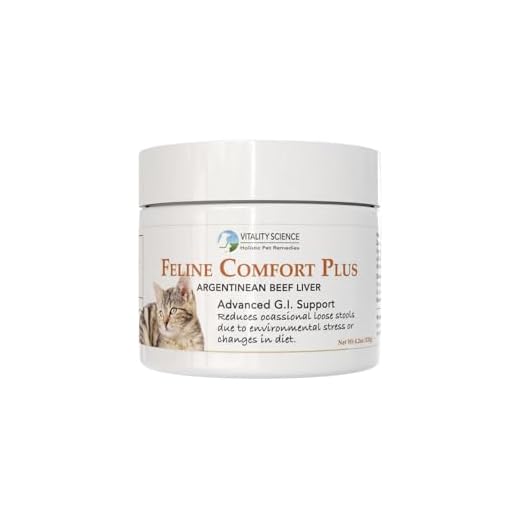

Offering nourishment to a homeless feline can seem compassionate, yet it’s essential to approach this act with caution. I’ve seen firsthand the complexities that can arise. For instance, while it may provide temporary relief for the animal, it could inadvertently encourage dependency, making it harder for them to adapt to their natural hunting instincts.
Moreover, sharing leftovers or store-bought meals can sometimes lead to health issues. Many human foods are unsuitable for these creatures and can cause digestive problems or nutritional imbalances. If you do choose to assist, consider providing specialized formulas designed for outdoor-dwelling animals, ensuring they receive the right nutrients.
There are also concerns regarding local wildlife and community regulations. In some areas, feeding unowned animals may attract unwanted attention from pests or create disturbances in the ecosystem. Always check local guidelines before taking any action. Striking a balance between compassion and responsibility is key.
Ultimately, while the intention to help is admirable, it’s crucial to weigh the potential consequences. Engaging with local animal welfare organizations can provide guidance on the best ways to support these creatures without compromising their health or safety.
Understanding the Impact on Local Wildlife
When you offer nourishment to homeless felines, the local ecosystem can experience significant changes. Predatory behavior in these animals can lead to a decline in bird populations and small mammals. Scientific studies highlight that outdoor cats are responsible for the deaths of billions of birds and small animals each year. This disruption can upset the balance of the local wildlife community.
It’s important to consider alternatives that protect native species while addressing the needs of these animals. One option is to support local animal welfare organizations that provide spaying and neutering services. This approach can help control the population of free-roaming animals over time, reducing their negative impact on wildlife. Additionally, participating in community programs can foster a more sustainable environment for both animals and their habitats.
For those dealing with behavioral issues related to their own pets, such as unintentional marking, resources exist to assist. For example, you can check out information on how to prevent female cats from spraying. This can help reduce unwanted behaviors that may arise from stress or territorial disputes.
Lastly, if you’re curious about other products that may affect your furry friends, it’s wise to research topics like the safety of diatomaceous earth for cats. Making informed decisions can contribute to the well-being of both your pets and the wildlife around you.
Health Risks for Felines and Human Interaction
It’s vital to understand that offering food to wandering felines can lead to various health issues for both them and the people involved. These animals may carry parasites and diseases, such as toxoplasmosis and feline leukemia, which can be transmitted to humans through contact or contaminated surfaces.
When humans interact with these animals, there’s a risk of bites or scratches, potentially resulting in infections. It’s essential to approach any unfamiliar feline cautiously, as they may not be accustomed to human handling and can react defensively.
Additionally, improperly managing their diet can lead to obesity and related health problems. Wild animals have specific nutritional needs, and supplying them with inappropriate food can disrupt their natural foraging behavior and harm their health.
If you’re concerned about their well-being, consider supporting local shelters that can provide professional care and rehabilitation. This ensures that these creatures receive proper attention and reduces the risks associated with casual human interaction.
Video:
Offering nourishment to a homeless feline can seem compassionate, yet it’s essential to approach this act with caution. I’ve seen firsthand the complexities that can arise. For instance, while it may provide temporary relief for the animal, it could inadvertently encourage dependency, making it harder for them to adapt to their natural hunting instincts.
Moreover, sharing leftovers or store-bought meals can sometimes lead to health issues. Many human foods are unsuitable for these creatures and can cause digestive problems or nutritional imbalances. If you do choose to assist, consider providing specialized formulas designed for outdoor-dwelling animals, ensuring they receive the right nutrients.
There are also concerns regarding local wildlife and community regulations. In some areas, feeding unowned animals may attract unwanted attention from pests or create disturbances in the ecosystem. Always check local guidelines before taking any action. Striking a balance between compassion and responsibility is key.
Ultimately, while the intention to help is admirable, it’s crucial to weigh the potential consequences. Engaging with local animal welfare organizations can provide guidance on the best ways to support these creatures without compromising their health or safety.
Understanding the Impact on Local Wildlife
When you offer nourishment to homeless felines, the local ecosystem can experience significant changes. Predatory behavior in these animals can lead to a decline in bird populations and small mammals. Scientific studies highlight that outdoor cats are responsible for the deaths of billions of birds and small animals each year. This disruption can upset the balance of the local wildlife community.
It’s important to consider alternatives that protect native species while addressing the needs of these animals. One option is to support local animal welfare organizations that provide spaying and neutering services. This approach can help control the population of free-roaming animals over time, reducing their negative impact on wildlife. Additionally, participating in community programs can foster a more sustainable environment for both animals and their habitats.
For those dealing with behavioral issues related to their own pets, such as unintentional marking, resources exist to assist. For example, you can check out information on how to prevent female cats from spraying. This can help reduce unwanted behaviors that may arise from stress or territorial disputes.
Lastly, if you’re curious about other products that may affect your furry friends, it’s wise to research topics like the safety of diatomaceous earth for cats. Making informed decisions can contribute to the well-being of both your pets and the wildlife around you.
Health Risks for Felines and Human Interaction
It’s vital to understand that offering food to wandering felines can lead to various health issues for both them and the people involved. These animals may carry parasites and diseases, such as toxoplasmosis and feline leukemia, which can be transmitted to humans through contact or contaminated surfaces.
When humans interact with these animals, there’s a risk of bites or scratches, potentially resulting in infections. It’s essential to approach any unfamiliar feline cautiously, as they may not be accustomed to human handling and can react defensively.
Additionally, improperly managing their diet can lead to obesity and related health problems. Wild animals have specific nutritional needs, and supplying them with inappropriate food can disrupt their natural foraging behavior and harm their health.
If you’re concerned about their well-being, consider supporting local shelters that can provide professional care and rehabilitation. This ensures that these creatures receive proper attention and reduces the risks associated with casual human interaction.
Video:
Offering nourishment to a homeless feline can seem compassionate, yet it’s essential to approach this act with caution. I’ve seen firsthand the complexities that can arise. For instance, while it may provide temporary relief for the animal, it could inadvertently encourage dependency, making it harder for them to adapt to their natural hunting instincts.
Moreover, sharing leftovers or store-bought meals can sometimes lead to health issues. Many human foods are unsuitable for these creatures and can cause digestive problems or nutritional imbalances. If you do choose to assist, consider providing specialized formulas designed for outdoor-dwelling animals, ensuring they receive the right nutrients.
There are also concerns regarding local wildlife and community regulations. In some areas, feeding unowned animals may attract unwanted attention from pests or create disturbances in the ecosystem. Always check local guidelines before taking any action. Striking a balance between compassion and responsibility is key.
Ultimately, while the intention to help is admirable, it’s crucial to weigh the potential consequences. Engaging with local animal welfare organizations can provide guidance on the best ways to support these creatures without compromising their health or safety.
Understanding the Impact on Local Wildlife
When you offer nourishment to homeless felines, the local ecosystem can experience significant changes. Predatory behavior in these animals can lead to a decline in bird populations and small mammals. Scientific studies highlight that outdoor cats are responsible for the deaths of billions of birds and small animals each year. This disruption can upset the balance of the local wildlife community.
It’s important to consider alternatives that protect native species while addressing the needs of these animals. One option is to support local animal welfare organizations that provide spaying and neutering services. This approach can help control the population of free-roaming animals over time, reducing their negative impact on wildlife. Additionally, participating in community programs can foster a more sustainable environment for both animals and their habitats.
For those dealing with behavioral issues related to their own pets, such as unintentional marking, resources exist to assist. For example, you can check out information on how to prevent female cats from spraying. This can help reduce unwanted behaviors that may arise from stress or territorial disputes.
Lastly, if you’re curious about other products that may affect your furry friends, it’s wise to research topics like the safety of diatomaceous earth for cats. Making informed decisions can contribute to the well-being of both your pets and the wildlife around you.
Health Risks for Felines and Human Interaction
It’s vital to understand that offering food to wandering felines can lead to various health issues for both them and the people involved. These animals may carry parasites and diseases, such as toxoplasmosis and feline leukemia, which can be transmitted to humans through contact or contaminated surfaces.
When humans interact with these animals, there’s a risk of bites or scratches, potentially resulting in infections. It’s essential to approach any unfamiliar feline cautiously, as they may not be accustomed to human handling and can react defensively.
Additionally, improperly managing their diet can lead to obesity and related health problems. Wild animals have specific nutritional needs, and supplying them with inappropriate food can disrupt their natural foraging behavior and harm their health.
If you’re concerned about their well-being, consider supporting local shelters that can provide professional care and rehabilitation. This ensures that these creatures receive proper attention and reduces the risks associated with casual human interaction.









